-
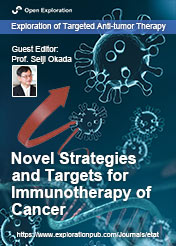 Special Issue Topic
Special Issue TopicNovel Strategies and Targets for Immunotherapy of Cancer
Submission Deadline: September 30, 2023Guest Editor
Prof. Seiji Okada E-Mail
Division of Hematopoiesis, Joint Research Center for Human Retrovirus Infection & Graduate School of Medical Sciences, Kumamoto University, Kumamoto, Japan
Research Keywords: Targeting therapy; cancer immunotherapy; precision medicine; animal model; Patient-derived xenograft (PDX)
About the Special Issue
Immunotherapy is a type of cancer treatment that helps the patients’ immune system to fight with cancer by boosting the power of immune cells. Immunotherapy used to be the way to nonspecifically activate immune system by cytokines or immune stimulants such as BCG, and it was just an adjunctive therapy of surgery, chemotherapy and radiotherapy. Recently, immunotherapy is becoming the main actor of cancer therapy by developing various therapeutic approaches and therapies such as monoclonal antibodies, immune check point inhibitors, T-cell transfer therapy such as CAR-T therapy, etc. Immune system modulators such as interferons are also clinically in use and effective in some sort of cancers. These immunotherapies still have ample scope for improvement. The aim of this special issue is to discuss the latest progress and future direction of cancer immunotherapy. We accept original research articles, critical review papers and commentaries that provide novel approaches and highlight the promising targets for cancer immunotherapies.
Keywords: Immunotherapy; CAR-T; therapeutic monoclonal antibodies; immunomodulators; treatment vaccines; immune checkpoint inhibitors
Published Articles
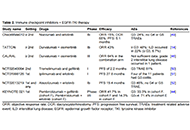 It might be a dead end: immune checkpoint inhibitor therapy in EGFR-mutated NSCLCOpen AccessReviewDespite innovative advances in molecular targeted therapy, treatment strategies using immune checkpoint inhibitors (ICIs) for epidermal growth factor receptor (EGFR)-mutant non-small cell lung cancer [...] Read more.Ken Akao ... Kazuyoshi ImaizumiPublished: July 19, 2024 Explor Target Antitumor Ther. 2024;5:826–840
It might be a dead end: immune checkpoint inhibitor therapy in EGFR-mutated NSCLCOpen AccessReviewDespite innovative advances in molecular targeted therapy, treatment strategies using immune checkpoint inhibitors (ICIs) for epidermal growth factor receptor (EGFR)-mutant non-small cell lung cancer [...] Read more.Ken Akao ... Kazuyoshi ImaizumiPublished: July 19, 2024 Explor Target Antitumor Ther. 2024;5:826–840
DOI: https://doi.org/10.37349/etat.2024.00251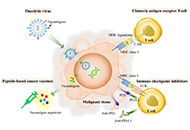 Immunopeptidomics in the cancer immunotherapy eraOpen AccessReviewCancer is the primary cause of death worldwide, and conventional treatments are painful, complicated, and have negative effects on healthy cells. However, cancer immunotherapy has emerged as a promi [...] Read more.Sutatip Pongcharoen ... Supachai TopanurakPublished: July 17, 2024 Explor Target Antitumor Ther. 2024;5:801–817
Immunopeptidomics in the cancer immunotherapy eraOpen AccessReviewCancer is the primary cause of death worldwide, and conventional treatments are painful, complicated, and have negative effects on healthy cells. However, cancer immunotherapy has emerged as a promi [...] Read more.Sutatip Pongcharoen ... Supachai TopanurakPublished: July 17, 2024 Explor Target Antitumor Ther. 2024;5:801–817
DOI: https://doi.org/10.37349/etat.2024.00249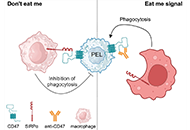 Promising immunotherapeutic approaches for primary effusion lymphomaOpen AccessReviewPrimary effusion lymphoma (PEL) is a large B-cell neoplasm usually presenting as a serious effusion in body cavities without detectable tumor masses. It is an AIDS-related non-Hodgkin’s lymphoma ( [...] Read more.Jutatip Panaampon, Seiji OkadaPublished: June 26, 2024 Explor Target Antitumor Ther. 2024;5:699–713
Promising immunotherapeutic approaches for primary effusion lymphomaOpen AccessReviewPrimary effusion lymphoma (PEL) is a large B-cell neoplasm usually presenting as a serious effusion in body cavities without detectable tumor masses. It is an AIDS-related non-Hodgkin’s lymphoma ( [...] Read more.Jutatip Panaampon, Seiji OkadaPublished: June 26, 2024 Explor Target Antitumor Ther. 2024;5:699–713
DOI: https://doi.org/10.37349/etat.2024.00242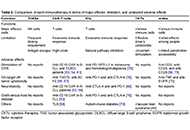 Tri-specific killer engager: unleashing multi-synergic power against cancerOpen AccessReviewCancer continues to be a global health concern, necessitating innovative solutions for treatment. Tri-specific killer engagers (TriKEs) have emerged as a promising class of immunotherapeutic agents, [...] Read more.Peeranut Winidmanokul ... Seiji OkadaPublished: April 25, 2024 Explor Target Antitumor Ther. 2024;5:432–448
Tri-specific killer engager: unleashing multi-synergic power against cancerOpen AccessReviewCancer continues to be a global health concern, necessitating innovative solutions for treatment. Tri-specific killer engagers (TriKEs) have emerged as a promising class of immunotherapeutic agents, [...] Read more.Peeranut Winidmanokul ... Seiji OkadaPublished: April 25, 2024 Explor Target Antitumor Ther. 2024;5:432–448
DOI: https://doi.org/10.37349/etat.2024.00227 Magnetite nanoparticles: an emerging adjunctive tool for the improvement of cancer immunotherapyOpen AccessReviewCancer immunotherapy has emerged as a groundbreaking field, offering promising and transformative tools for oncological research and treatment. However, it faces several limitations, including varia [...] Read more.Phoomipat Jungcharoen ... Charupong SaengboonmeePublished: April 23, 2024 Explor Target Antitumor Ther. 2024;5:316–331
Magnetite nanoparticles: an emerging adjunctive tool for the improvement of cancer immunotherapyOpen AccessReviewCancer immunotherapy has emerged as a groundbreaking field, offering promising and transformative tools for oncological research and treatment. However, it faces several limitations, including varia [...] Read more.Phoomipat Jungcharoen ... Charupong SaengboonmeePublished: April 23, 2024 Explor Target Antitumor Ther. 2024;5:316–331
DOI: https://doi.org/10.37349/etat.2024.00220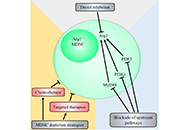 Novel therapeutic strategies targeting myeloid-derived suppressor cell immunosuppressive mechanisms for cancer treatmentOpen AccessReviewCancer is the leading cause of death globally superseded only by cardiovascular diseases, and novel strategies to overcome therapeutic resistance against existing cancer treatments are urgently requ [...] Read more.Eric Jou ... Fizza NasimPublished: February 28, 2024 Explor Target Antitumor Ther. 2024;5:187–207
Novel therapeutic strategies targeting myeloid-derived suppressor cell immunosuppressive mechanisms for cancer treatmentOpen AccessReviewCancer is the leading cause of death globally superseded only by cardiovascular diseases, and novel strategies to overcome therapeutic resistance against existing cancer treatments are urgently requ [...] Read more.Eric Jou ... Fizza NasimPublished: February 28, 2024 Explor Target Antitumor Ther. 2024;5:187–207
DOI: https://doi.org/10.37349/etat.2024.00212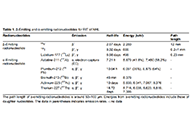 Recent preclinical and clinical advances in radioimmunotherapy for non-Hodgkin’s lymphomaOpen AccessReviewRadioimmunotherapy (RIT) is a therapy that combines a radioactive nucleotide with a monoclonal antibody (mAb). RIT enhances the therapeutic effect of mAb and reduces toxicity compared with conventio [...] Read more.Hiroki Goto ... Seiji OkadaPublished: February 28, 2024 Explor Target Antitumor Ther. 2024;5:208–224
Recent preclinical and clinical advances in radioimmunotherapy for non-Hodgkin’s lymphomaOpen AccessReviewRadioimmunotherapy (RIT) is a therapy that combines a radioactive nucleotide with a monoclonal antibody (mAb). RIT enhances the therapeutic effect of mAb and reduces toxicity compared with conventio [...] Read more.Hiroki Goto ... Seiji OkadaPublished: February 28, 2024 Explor Target Antitumor Ther. 2024;5:208–224
DOI: https://doi.org/10.37349/etat.2024.00213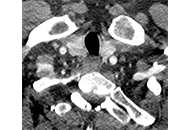 A case of immunotherapy-induced thyroiditisOpen AccessCase ReportImmunotherapy treatments for cancer are known to cause adverse thyroid events which present a diagnostic challenge to clinicians and radiologists. This case report highlights the importance of a hig [...] Read more.George Pears ... Joseph SaccoPublished: February 28, 2024 Explor Target Antitumor Ther. 2024;5:225–231
A case of immunotherapy-induced thyroiditisOpen AccessCase ReportImmunotherapy treatments for cancer are known to cause adverse thyroid events which present a diagnostic challenge to clinicians and radiologists. This case report highlights the importance of a hig [...] Read more.George Pears ... Joseph SaccoPublished: February 28, 2024 Explor Target Antitumor Ther. 2024;5:225–231
DOI: https://doi.org/10.37349/etat.2024.00214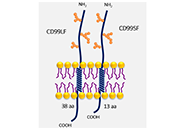 CD99 tumor associated antigen is a potential target for antibody therapy of T-cell acute lymphoblastic leukemiaOpen AccessReviewMonoclonal antibodies (mAbs) are an effective drug for targeted immunotherapy in several cancer types. However, so far, no antibody has been successfully developed for certain types of cancer, inclu [...] Read more.Kamonporn Kotemul ... Nuchjira TakheawPublished: February 19, 2024 Explor Target Antitumor Ther. 2024;5:96–107
CD99 tumor associated antigen is a potential target for antibody therapy of T-cell acute lymphoblastic leukemiaOpen AccessReviewMonoclonal antibodies (mAbs) are an effective drug for targeted immunotherapy in several cancer types. However, so far, no antibody has been successfully developed for certain types of cancer, inclu [...] Read more.Kamonporn Kotemul ... Nuchjira TakheawPublished: February 19, 2024 Explor Target Antitumor Ther. 2024;5:96–107
DOI: https://doi.org/10.37349/etat.2024.00207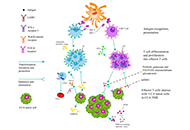 Therapeutic significance of tumor microenvironment in cholangiocarcinoma: focus on tumor-infiltrating T lymphocytesOpen AccessReviewCholangiocarcinoma (CCA) is a highly aggressive type of adenocarcinoma distinguished by its invasiveness. Depending on specific anatomical positioning within the biliary tree, CCA can be categorized [...] Read more.Chaoqun Li ... Jieer YingPublished: December 28, 2023 Explor Target Antitumor Ther 2023;4:1310–1327
Therapeutic significance of tumor microenvironment in cholangiocarcinoma: focus on tumor-infiltrating T lymphocytesOpen AccessReviewCholangiocarcinoma (CCA) is a highly aggressive type of adenocarcinoma distinguished by its invasiveness. Depending on specific anatomical positioning within the biliary tree, CCA can be categorized [...] Read more.Chaoqun Li ... Jieer YingPublished: December 28, 2023 Explor Target Antitumor Ther 2023;4:1310–1327
DOI: https://doi.org/10.37349/etat.2023.00199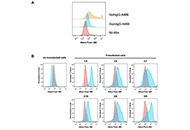 Chimeric single-chain variable fragment-human immunoglobulin G crystallizable fragment antibody against GD2 for neuroblastoma targeted immunotherapyOpen AccessOriginal ArticleAim: The present study aims to generate chimeric mouse single-chain variable fragment (scFv) and immunoglobulin G1 (IgG1) crystallizable fragment (Fc) antibody against disialoganglioside (GD2) fo [...] Read more.Witida Laopajon ... Watchara KasinrerkPublished: December 06, 2023 Explor Target Antitumor Ther. 2023;4:1145–1156
Chimeric single-chain variable fragment-human immunoglobulin G crystallizable fragment antibody against GD2 for neuroblastoma targeted immunotherapyOpen AccessOriginal ArticleAim: The present study aims to generate chimeric mouse single-chain variable fragment (scFv) and immunoglobulin G1 (IgG1) crystallizable fragment (Fc) antibody against disialoganglioside (GD2) fo [...] Read more.Witida Laopajon ... Watchara KasinrerkPublished: December 06, 2023 Explor Target Antitumor Ther. 2023;4:1145–1156
DOI: https://doi.org/10.37349/etat.2023.00188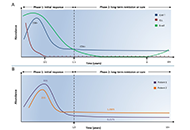 A decade of CD4+ chimeric antigen receptor T-cell evolution in two chronic lymphocytic leukemia patients: were chronic lymphocytic leukemia cells present?Open AccessCommentaryOn Feb 2, 2022, Nature published the paper titled “Decade-long leukemia remissions with the persistence of CD4+ CAR T-cells” (Nature. 2022;602:503–9. doi: 10.1038/s41586-021-04390-6). Accordin [...] Read more.Dimitrios Bouzianas, Stella BouzianaPublished: October 31, 2023 Explor Target Antitumor Ther. 2023;4:1128–1135
A decade of CD4+ chimeric antigen receptor T-cell evolution in two chronic lymphocytic leukemia patients: were chronic lymphocytic leukemia cells present?Open AccessCommentaryOn Feb 2, 2022, Nature published the paper titled “Decade-long leukemia remissions with the persistence of CD4+ CAR T-cells” (Nature. 2022;602:503–9. doi: 10.1038/s41586-021-04390-6). Accordin [...] Read more.Dimitrios Bouzianas, Stella BouzianaPublished: October 31, 2023 Explor Target Antitumor Ther. 2023;4:1128–1135
DOI: https://doi.org/10.37349/etat.2023.00186 -
-
Ongoing Special Issues
-
Completed Special Issues